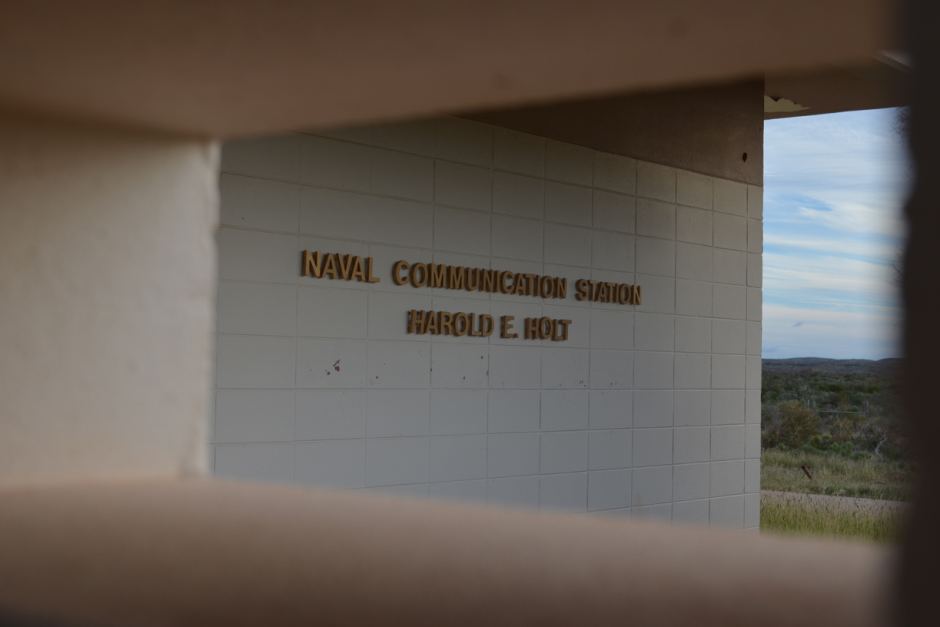Category: Defence and National Security / Defence and Aerospace Industries
White paper outlines $4b in WA defence upgrades
Thursday, 25 Feb 2016 18:35:03 | Rebecca Turner

The Harold E Holt Naval Communications Base will receive a $300 million upgrade to provide space surveillance capacity. (ABC North West WA: Alex Hyman)
Western Australia is poised for more than $4 billion in defence spending over the next two decades, with the new defence white paper outlining a growing role for the state in a challenging international security environment.
Defence analysts welcomed the paper's recognition of the strategic significance of WA, and Premier Colin Barnett told WA Parliament the investment would create jobs, both military and civilian, and boost the construction industry.
"There are substantial benefits for Western Australia coming out of this," he said.
"Over the first 10 years, it's expected something like $2.4 billion of defence spending will take place in this state and in the following 10 years a further $1.9 billion."
Big investments outlined in the defence white paper included $300 million to provide a space surveillance capacity at the Harold E Holt Naval Communication Station near Exmouth, a $200 million redevelopment of Curtin air base, and $700 million at HMAS Stirling.
Defence spending in WA
HMAS Stirling
- $700m in the next decade
- Includes infrastructure to support Canberra-class amphibious ships, bigger submarine fleet, and future frigates
Harold E Holt Naval Communications Station
- $200m to $300m between 2016 and 2024
- Space surveillance capability
RAAF Curtin
- $100m to $200m redevelopment from 2017 to 2022
RAAF Base Pearce
- $30m in the next decade
RAAF Base Learmonth
- $190m in the next decade
Campbell Barracks
- $200m upgrade
Irwin Barracks
- $175m upgrade
Guildford Barracks
- Improved logistics facilities
Cocos (Keeling) Island Air Force base
- Infrastructure works to support Poseidon aircraft
Yampi Sound training base
- Upgrade by 2020
The Exmouth facilities would play an increasingly influential role in helping Australia and the United States to deal with security risks, according to Dr Malcolm Davis from the Australian Strategic Policy Institute.
"This will give a foundation for missile defence, if later we want to go down that path," he said.
"But it also gives us a space surveillance capability so we can monitor activities happening in space over Australia."
Focus on Indian Ocean security
Many WA facilities, particularly those in the north-west, were being readied to cope with new-generation military hardware.
The Cocos (Keeling) Island Air Force base would receive up to $200 million as it prepared to support the P-8A Poseidon aircraft.
But the most significant defence facility would remain at HMAS Stirling, where the submarine fleet would grow in size from six to 12 and five anti-submarine frigates would be based.
"The defence white paper's recognised that over the next 20 years nearly half of the world's submarines are going to be operating in our region, mainly the Indo-Pacific region," Curtin University lecturer in national security and international relations Gavin Briggs said.
The investment in Western Australia was just one example of the importance of northern and western Australia in the nation's defence policy, which was increasingly focused on the Indian Ocean region.
"Because those are the key areas where there's the greatest major power competition, economic activity, the rise of China, the rise of India, increasing maritime trade through archipelagic Asian regions," Dr Davis explained.
"So Australia has an obligation to focus on that region in particular."
- About Us
- |
- Terms of Use
- |
-
 RSS
RSS - |
- Privacy Policy
- |
- Contact Us
- |
- Shanghai Call Center: 962288
- |
- Tip-off hotline: 52920043
- 沪ICP证:沪ICP备05050403号-1
- |
- 互联网新闻信息服务许可证:31120180004
- |
- 网络视听许可证:0909346
- |
- 广播电视节目制作许可证:沪字第354号
- |
- 增值电信业务经营许可证:沪B2-20120012
Copyright © 1999- Shanghai Daily. All rights reserved.Preferably viewed with Internet Explorer 8 or newer browsers.




 Send to Kindle
Send to Kindle